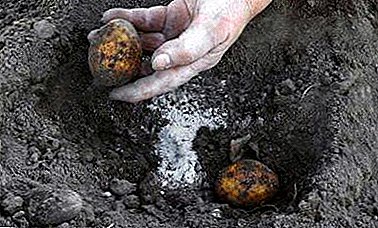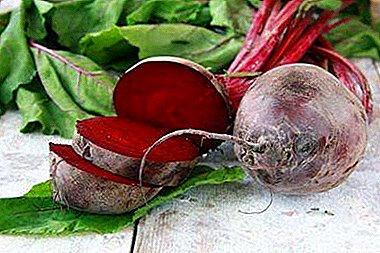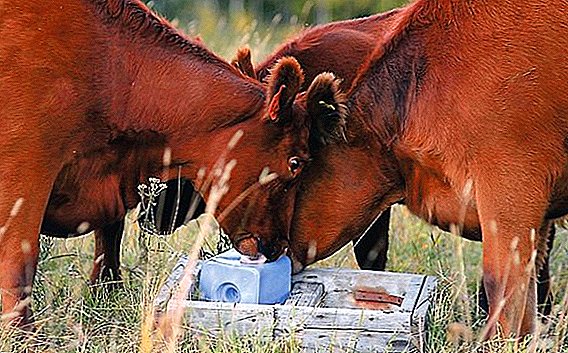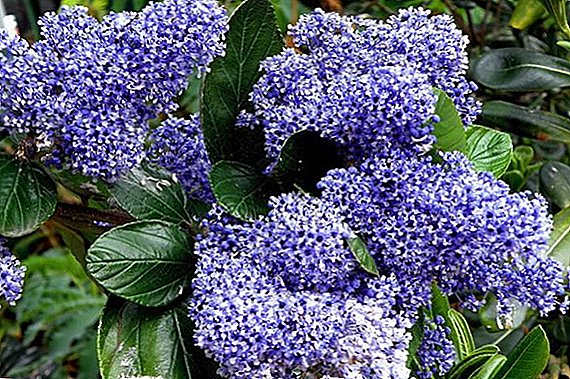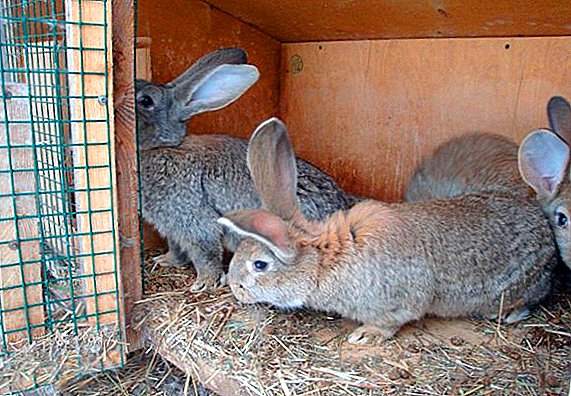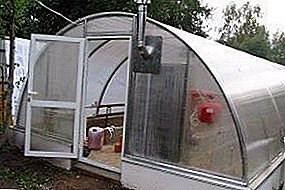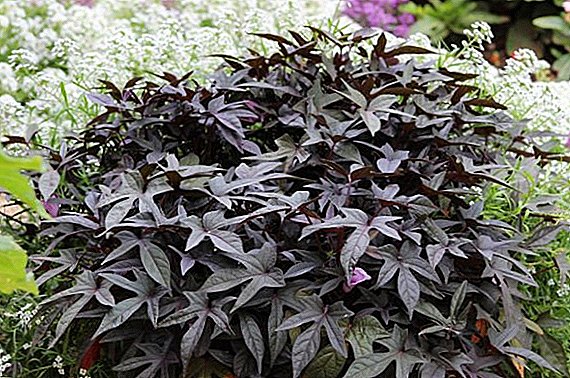 In home gardening plants are valued mainly for their decorative appearance and flowering splendor. A non-standard "highlight" of such a direction of ornamental gardening is the Ipomoea yam, which has long been cultivated solely as a root vegetable. But in recent decades, indoor Ipomoea cultivation has gained high popularity, and for good reason, since the variety of color of its leaves and flowers will complement any home interior.
In home gardening plants are valued mainly for their decorative appearance and flowering splendor. A non-standard "highlight" of such a direction of ornamental gardening is the Ipomoea yam, which has long been cultivated solely as a root vegetable. But in recent decades, indoor Ipomoea cultivation has gained high popularity, and for good reason, since the variety of color of its leaves and flowers will complement any home interior.
Botanical description
As a vegetable, Ipomoea was cultivated more than 5 thousand years ago. The name “sweet potato” was called by the group of Indian peoples Taino, who inhabited the territories of its growth. Ipomoea is a perennial, but in home gardening is often grown as an annual plant. According to the scientific classification, the ipomoea yam is one of the many species of plants of the genus Ipomea of the family Vyunkovye and belongs to the deciduous type of herbaceous plants. 
Did you know? The antioxidants contained in the yam tubers are capable of reducing the likelihood of the formation of cancerous tumors, but subject to their frequent use.
Since 1793, Jean Baptiste Lamarck, Professor of Zoology, has introduced such a botanical description:
- root system: tuberiform, spindle-shaped, thickened roots with yellow-orange pulp;
- stem: smooth, creeping, lianovidny, hollow inside, reaches a length of 3-4 m;
- leaves: alternate, smooth, heart-shaped with a pointed end, attached at the base to long leaf cuttings from 3 to 14 cm;
- flowers: petals of white or purple color, of the same shape, forming a funnel-shaped corolla 3.5-5 cm in diameter, single buds are combined into inflorescences from 1 to 3 pieces;
- Seeds: densely pubescent, elongated, reaching 6 mm in length, in an angular form in a flat woody seed box arranged individually in each chamber.
To the family of convolvulaceae also can be attributed such plants as: convolvulus, ipomeyu purple and calistegia terry.
Depending on the place of growth and quality of care, the characteristic of the Ipomoea may differ slightly from the stated botanical description. The main difference is the degree of intensity of color petals.
Distribution and habitat
Ipomoea yam is a tropical plant. The homeland of its growth are Africa, tropical areas of South America, Southeast China. The distribution and cultivation of morning glory as an ornamental plant is also possible in countries with a subtropical or temperate climate. In our latitudes, the cultivation of morning glory is also successful, but only as an annual plant. 
Important! Eating sweet potatoes during pregnancy or breastfeeding is not recommended.
Popular varieties
Decorative value of the Ipomoea brings not only a flowering look. Many varieties do not have a lush color, but are particularly valued for their leafiness, decorative forms and colors. The most popular and popular among gardeners are such varieties:
- Margarita - it is characterized by the heart-shaped form of leaves of a rich golden-green color;
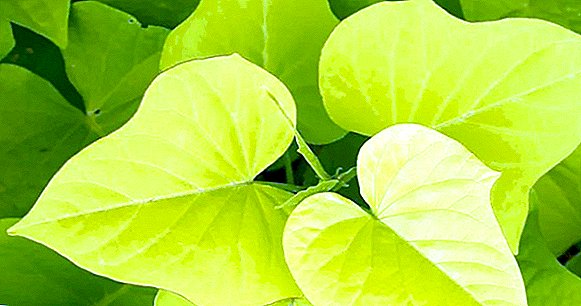
- Blackie - varietal features are five-lobed, deeply dissected leaves of dark purple color and light purple color of flowers;
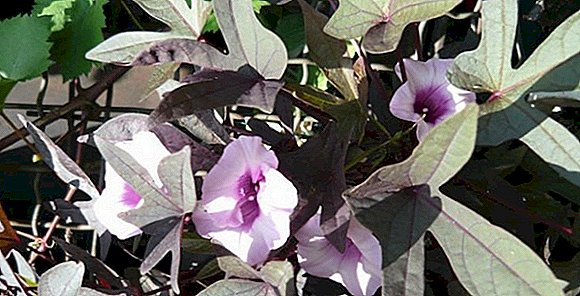
- Sweet heart red - the peculiarities of the variety are young leaves of light-green color, which in time acquire a green-purple color;

- Pink frost - it is characterized by solid leaves of triangular shape, leaf color is green with pink framing and white stripes;
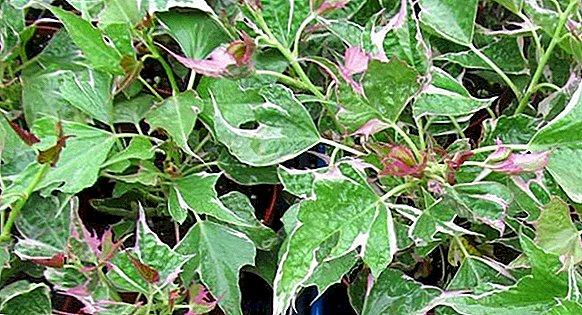
- Illusion emerald lace - has narrow lanceolate five-lobed leaves of light-green color.
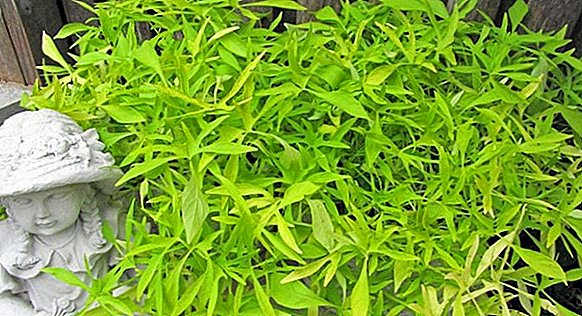
Application of Ipomoea yam
In addition to the decorative gardening of garden plots and the addition of home interiors, Ipomoea yam is used in such areas of activity:
- in cooking;
- in medicine.
Did you know? Yam tubers, often used for food, can minimize the harm caused by smoking.Varietal differences are manifested in the color and taste of root vegetables. So, the color of the pulp can be cream, yellow, orange or purple. Taste qualities of a product also depend on a grade - the root crop can have nut, fruit or vegetable tastes. "Sweet potatoes" can be eaten raw, cooked or baked. It can serve as a side dish for the main dish, on its basis tasty vegetable broths and broths are obtained, it can also be used as one of the ingredients in salads.
 As a food product Ipomoea brings significant benefits to the body. High nutritional value, low calorie content and a large amount of vitamins and minerals saturate the body and increase the level of resistance to diseases, for which the yam is especially valued in the medical industry. Useful properties of "sweet potato":
As a food product Ipomoea brings significant benefits to the body. High nutritional value, low calorie content and a large amount of vitamins and minerals saturate the body and increase the level of resistance to diseases, for which the yam is especially valued in the medical industry. Useful properties of "sweet potato":- low glycemic index of the root stimulates the body to a high perception of insulin;
- the dietary fiber contained normalizes the activity of the gastrointestinal tract and contributes to the elimination of "bad" cholesterol, thus cleaning the blood;
- replenishing the body with beneficial substances, the root crop stimulates the work of the hematopoietic system and increases the elasticity of the vessel walls;
- vitamins and minerals in the composition of the root have anti-inflammatory properties on the nervous system;
- The carbohydrates contained in the sweet potato are involved in building muscle, which is especially appreciated by professional athletes;
- the content of female hormones contributes to an increase in female libido and is often recommended for use by women during menopause.
The onion-slizun, Kale cabbage, watercress, meadow sage, gooseberry, dodder, chervil, prince and lyubka are also well influenced by the gastrointestinal robot.
Benefit the body bring not only the tubers of the plant, but also green shoots.
Use in landscape design
Ipomoea yam is a climbing plant, and therefore is able to ennoble not only an ordinary apartment window or balcony, but also give a flowering look to a garden plot. Its feature is the ability to form dense veils, it looks spectacular in landscape design as vertical gardening. This means planting for decorating arches, arbors, fences and other fences. Being a creeper, in the process of developing the Ipomoea tightly wraps around the support, next to which it is planted, thus helping to decorate the area and helping to hide the existing shortcomings.  Varietal variety contributes to the creation of original compositions when combined, which contributes to the creation of a unique design of the garden plot or park area, and the long summer-autumn season pleases with a long palette of colors with a palette of colors. As a climbing plant, the ipomoea plant also looks great when grown in hanging pots. Dense and lush vegetation falls beautifully, and when combined with two contrasting varieties it looks more impressive. The way of amulet growing is suitable for the conditions of the garden plot, apartment or balcony and is able to give comfort to even the most modest interior.
Varietal variety contributes to the creation of original compositions when combined, which contributes to the creation of a unique design of the garden plot or park area, and the long summer-autumn season pleases with a long palette of colors with a palette of colors. As a climbing plant, the ipomoea plant also looks great when grown in hanging pots. Dense and lush vegetation falls beautifully, and when combined with two contrasting varieties it looks more impressive. The way of amulet growing is suitable for the conditions of the garden plot, apartment or balcony and is able to give comfort to even the most modest interior.
Growing and caring for plants
Ipomoea yam does not belong to unpretentious plants, but in the process of growing does not bring much trouble. With proper maintenance conditions and taking into account the requirements of the plant to the soil and watering the ipomoea has a rapid growth of shoots and fast flowering.
Read about unusual colors such as sundew, passionflower, nepentes, orchis, hoya, camellia and amorphophallus.
Conditions of detention
Growing sweet potatoes in the open field is the most popular way. When planting, be aware that the plant does not tolerate direct sunlight, but prefers a high level of illumination (diffused sunlight). Ipomoea also does not tolerate drafts. Therefore, southern and southeastern non-blown areas without high hedges or shade plants will be suitable for cultivation.  As for indoor cultivation, in this capacity, the morning glory is a perennial plant. A feature of indoor cultivation is the tendency to shedding foliage in the cold season with insufficient heating of the room.
As for indoor cultivation, in this capacity, the morning glory is a perennial plant. A feature of indoor cultivation is the tendency to shedding foliage in the cold season with insufficient heating of the room.
Did you know? Batata is a valuable food culture. From it, as well as from potatoes, the production of alcohol, starch, molasses and flour.The need of a sweet potato for lighting involves placing it on well-lit window sills or balconies. At the same time, access of fresh air is also important, but without the formation of drafts. For this reason, indoor cultivation of Ipomoea is less common than in open ground. For growing plants in room conditions will fit any bulk flower pots or hanging pots.
Soil and fertilizer
Growing sweet potatoes requires sandy or loamy soil mixture with a pH level of 4.5 to 7, which corresponds to slightly acidic or neutral soil. It is important that the soil mix is fertile, loose and well drained. In the "poor" soils, the ipomoea also grows well, but at the same time the tubers develop very small, and the green mass is not so lush and voluminous. Abundant color in such soils, as a rule, does not happen. 
Watering and moisture
"Sweet Potato" prefers high soil moisture without significant overflow. Particularly demanding on moisture plant during its active growth and flowering. Mature specimens are capable of tolerating short-term droughts, but at the same time their decorative appearance is lost. As for overflows, in such conditions, tubers of the Ipomoea are prone to decay, which subsequently leads to the death of plants. Regardless of the method of cultivation (indoor or outdoor), it is important to maintain an optimal level of soil moisture, but without overflows.
Important! The high content of ascorbic acid in tubers stimulates an increase in the immune threshold in the human body. The consumption of tubers in food is especially useful in the period of respiratory diseases.
Relation to temperature
Ipomoea yam is a tropical plant, and therefore prefers warm weather conditions for growth. The optimal temperature range is from + 9 ºС to -29 ºС. When growing it is important to consider that at low temperatures the growth of the plant slows down, and at too high - the plant can completely die.  In the cold period of the year, the plant must be provided with a temperature range from +10 to +16 ºС. Being a heat-loving plant, the sweet potato is not capable of wintering in our climate and frequent fluctuations in the temperature background, and therefore it is annual, which implies planting new plants for future seasons.
In the cold period of the year, the plant must be provided with a temperature range from +10 to +16 ºС. Being a heat-loving plant, the sweet potato is not capable of wintering in our climate and frequent fluctuations in the temperature background, and therefore it is annual, which implies planting new plants for future seasons.
Reproduction and planting
Planting and reproduction can be easily done in two ways - by planting seeds or by vegetative propagation (grafting), but each method has its own characteristics.
Vegetatively propagated plants such as: cactus, tulip, kampsis and dieffenbachia.
Seeds
Seed method is the most time consuming. Despite the high germination of seeds, there are no guarantees for obtaining strong sprouts, and for the germination of the first shoots it takes a long time. For this reason, the seed method is often produced only for breeding purposes to breed new varieties. For those who are not looking for easy ways in gardening, the process will not be difficult, and patience will pay off a hundredfold.  The process of preparation and landing takes place in stages in this sequence of actions:
The process of preparation and landing takes place in stages in this sequence of actions:
- Stage 1: soil preparation. Soil mixture for planting seeds and their quick germination should be easier and friable than when planting seedlings, so the soil for planting should be mixed with river sand in a 2: 1 ratio. This mixture can also be diluted with one part of vermiculite.
- Stage 2: preparation of seed material for sowing. The preparatory stage consists in carrying out stratification and scarification of seed material. The stratification process consists in soaking the seeds in water or a weak solution of potassium permanganate for a day for “awakening” and swelling. Scarification is the intentional damage to the outer shell of the seed (puncture) for their early germination.
- Stage 3: planting seeds. The prepared seed is sparsely sown on a moist soil mixture and sprinkled with a small amount of soil on top. To accelerate the germination of the first seedlings of the tank with the seed, it is possible to cover the top with film or glass, occasionally airing the greenhouse. Stand such a "kindergarten" should in a warm and well-lit and ventilated room (place). The topsoil should be periodically moistened with a spray bottle, preventing it from drying out.
- Stage 4: cupping and planting seedlings. After 2 weeks, the first shoots will appear, and when they get stronger and reach 10-15 cm in height, they can be planted (transplanted) in a permanent place. By this time, as a rule, warm weather conditions are established, which makes it possible to land on open ground.
Did you know? From roasted and ground sweet potato seeds, you can brew a coffee drink - an analogue of coffee without "caffeine."
Vegetative
The easiest way to reproduce the Ipomoea is vegetative, produced by cutting the old shoots or young shoots from the tubers. Popular method of planting tubers for young shoots. To do this, after wintering the tubers are placed in the soil mixture and sprinkled on top with a small layer (1-2 cm) of soil. When the young shoots get stronger, they must be carefully cut and placed in a moist prepared container for growing.  For the rapid formation of roots, pre-young shoots can be placed in a container with water until their visible formation, after which they can be planted at a permanent place of growth. If planting is planned in open ground, then young shoots for their better survival should be germinated in a small capacity in the conditions of the room, and then landed on a permanent place. For the formation of young shoots by the end of the spring season, the tubers must be planted in the earthen substrate in February.
For the rapid formation of roots, pre-young shoots can be placed in a container with water until their visible formation, after which they can be planted at a permanent place of growth. If planting is planned in open ground, then young shoots for their better survival should be germinated in a small capacity in the conditions of the room, and then landed on a permanent place. For the formation of young shoots by the end of the spring season, the tubers must be planted in the earthen substrate in February.
Important! For normal growth and development of plants, the landing should be carried out at a distance of at least 20 cm from each other.
Features of care, depending on the place of detention
There are no significant differences in the care of a plant planted in open ground or in a flower pot. The only difference is that moisture evaporates faster in external conditions, therefore watering the morning glory in the open ground should be carried out more often and more abundantly. The most comfortable way with a predictable result can be considered as indoor cultivation, but in the open field the result often meets all expectations. 
Possible difficulties in growing
There are no significant difficulties in growing Ipomoea yam, but there are still some nuances:
- an important role is played by temperature fluctuations in the spring-summer season, which can affect the growth rate, and in some cases lead to the death of the plant;
- The quality of flowering can be affected by the inability to control the amount of sunlight, which can ultimately lead to a complete lack of color on the plant.
Pests, diseases and prevention
The sweet potato is rarely exposed to diseases and pests. The most common fungal disease is root rot, which appears against the background of constant waterlogging. To get rid of the fungus, it is enough to remove the diseased roots, and process the soil with any fungicide. Active drugs-fungicides: Bordeaux mixture, "Vitaros", copper sulfate, "Profit", "Fitolavin" and others.  "Vitaros"
"Vitaros"
Did you know? Yam tubers in their growth can reach gigantic sizes - more than 30 cm in length.Ipomoea pests are most susceptible to spider mites and aphids. For quick disposal, a single application of insecticide chemicals is sufficient. For self-treatment, you can use the usual soap solution for processing plants. Such insecticides are most effective: "Aktellik", "Vertimek", "Envidor", "Green Soap", "Oberon" and others.
 "Actellic"
"Actellic"Ipomoea yam - climbing plant that can ennoble the most simple landscape design or become a worthy decoration of home interior.The low demands of the plant are increasingly attracting gardeners to grow it, and the beautiful flowering look overshadows all the minor inconveniences that arise in the process of its cultivation.
Video: Ipomoea yam
Reviews from the network









